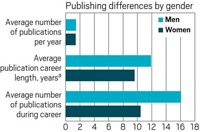Advertisement
Grab your lab coat. Let's get started
Welcome!
Welcome!
Create an account below to get 6 C&EN articles per month, receive newsletters and more - all free.
It seems this is your first time logging in online. Please enter the following information to continue.
As an ACS member you automatically get access to this site. All we need is few more details to create your reading experience.
Not you? Sign in with a different account.
Not you? Sign in with a different account.
ERROR 1
ERROR 1
ERROR 2
ERROR 2
ERROR 2
ERROR 2
ERROR 2
Password and Confirm password must match.
If you have an ACS member number, please enter it here so we can link this account to your membership. (optional)
ERROR 2
ACS values your privacy. By submitting your information, you are gaining access to C&EN and subscribing to our weekly newsletter. We use the information you provide to make your reading experience better, and we will never sell your data to third party members.
Research Funding
Scientists’ work impacted by NIH probe
US researchers with China collaborations saw fewer publications and citations compared with others
by Andrea Widener
April 21, 2022
| A version of this story appeared in
Volume 100, Issue 14
US scientists who collaborated with colleagues in China published fewer papers overall and saw them cited less often after the US government’s investigations into China’s influence on academia, according to a working paper published by the National Bureau of Economic Research (2022, DOI: 10.3386/w29941) that has not been peer-reviewed.
Social scientists at the University of California San Diego assessed papers published from 2010 to 2020 cataloged by PubMed. They analyzed work from 32,056 US-based scientists who collaborated with Chinese scientists and from a control of 70,746 who worked with scientists in other countries.
Collaboration by field

In particular, they looked at publications before and after 2018, which was the first year of the US Department of Justice’s China Initiative and the year the National Institutes of Health began sending letters to universities asking them to investigate hundreds of grant recipients, primarily those with Chinese collaborations.
China has been US scientists’ top international collaborator on PubMed publications since 2013, but its lead began to decrease in 2019, the analysis shows. Scientists with Chinese collaborations published 1.9% fewer papers and were cited 7.2% less in 2019–20 than in 2010–18. The control group saw no such declines.
The number of papers from scientists who had collaborated with colleagues in China declined across US institutions, which suggests “a broad phenomenon,” the researchers write in the paper. Scientists with Asian names and those with NIH funding were most affected.
An analysis of the data by field found that those with the most NIH funding and the highest number of US-China collaborations were most affected. They include materials engineering, physical chemistry, and several other chemistry-related fields. The authors say those fields also “experienced slower growth in scientific output than fields that are less affected.”



Join the conversation
Contact the reporter
Submit a Letter to the Editor for publication
Engage with us on Twitter